The three year joint federal-state study of the striped bass populations in Massachusetts waters will start later this month, according to Francis W. Sargent of Orleans, Director of the Division of Marine Fisheries, Department of Natural Resources. The announcement was made at the annual winter meeting of the Massachusetts Striped Bass Association, held Monday evening at American Legion Hall, Wollaston, where Mr. Sargent was the principle speaker.
The new project will be conducted under the terms of the Dingell-Johnson Act of 1950 which provides for federal assistance in the study of game fish species. The Commonwealth will be reimbursed from funds made available by the federal tax on fishing tackle sales.
“The results of this project,” Mr. Sargent said, “when coordinated with the work of the other coastal states, should answer many of the vital questions necessary to develop a coastwise management plan for our most prized game fish.” He explained that the initial phase of the investigation will determine whether striped bass winter in the tidal bays and rivers of Massachusetts.
“The striped bass,” he said, “is an anadromous fish that spawns in fresh ‘water during the spring like the alewife. After the eggs are hatched, the ,small fish are understood to remain in their parent rivers until they are two years old before making their first ocean journey. If any of these juvenile fish are found, they will be tagged and returned to the water to learn of their migration habits.”
They Travel North
He said previous, investigations indicated that large numbers of striped bass move out of Chesapeake Bay, Delaware Bay, and the Hudson River, and travel north along the coast. “These migrating fish,” he said, have been traced as far as Montauk Point and Point Judith, but it is not certain that these schools are necessarily the fish which frequent Massachusetts waters. By tagging any wintering fish that may be captured,” he continued, “we hope to determine whether the fish caught here are ‘tourists’ or ‘local residents’.”
Charles L. Wheeler of Falmouth, fisheries biologist of the Marine Fisheries Division, will supervise the project. He explained that with the start of the fishing season a series of aerial surveys will be made to determine fishing intensity at given locations. He added that striper fishermen will be interviewed and their catches, if any, weighed and measured with scale sample and other biological data recorded.
Mr. Sargent also introduced J. Arthur Posgay of the Woods Hole Oceanographic Institution, who will act as project leader for the striped bass study. Mr. Posgay explained that an important part of the investigation will require the cooperation of the fishermen as respects the return of printed post-free postal cards, which will be distributed through sportsmen’s clubs, bait and tackle shops, and boat liveries.
He assured the association members that their active participation and accurate reporting will assist him greatly and increase the effectiveness of the investigation.

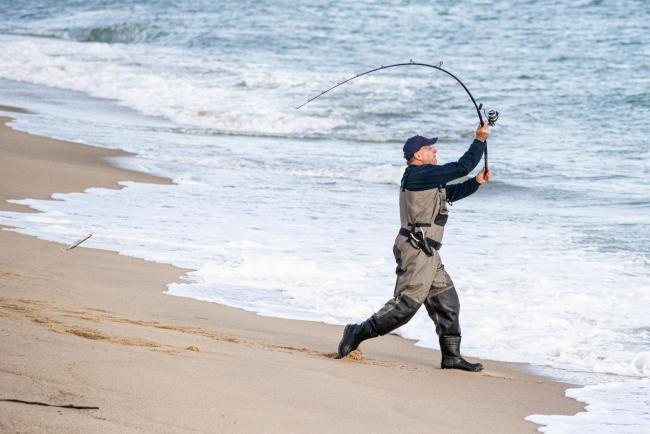
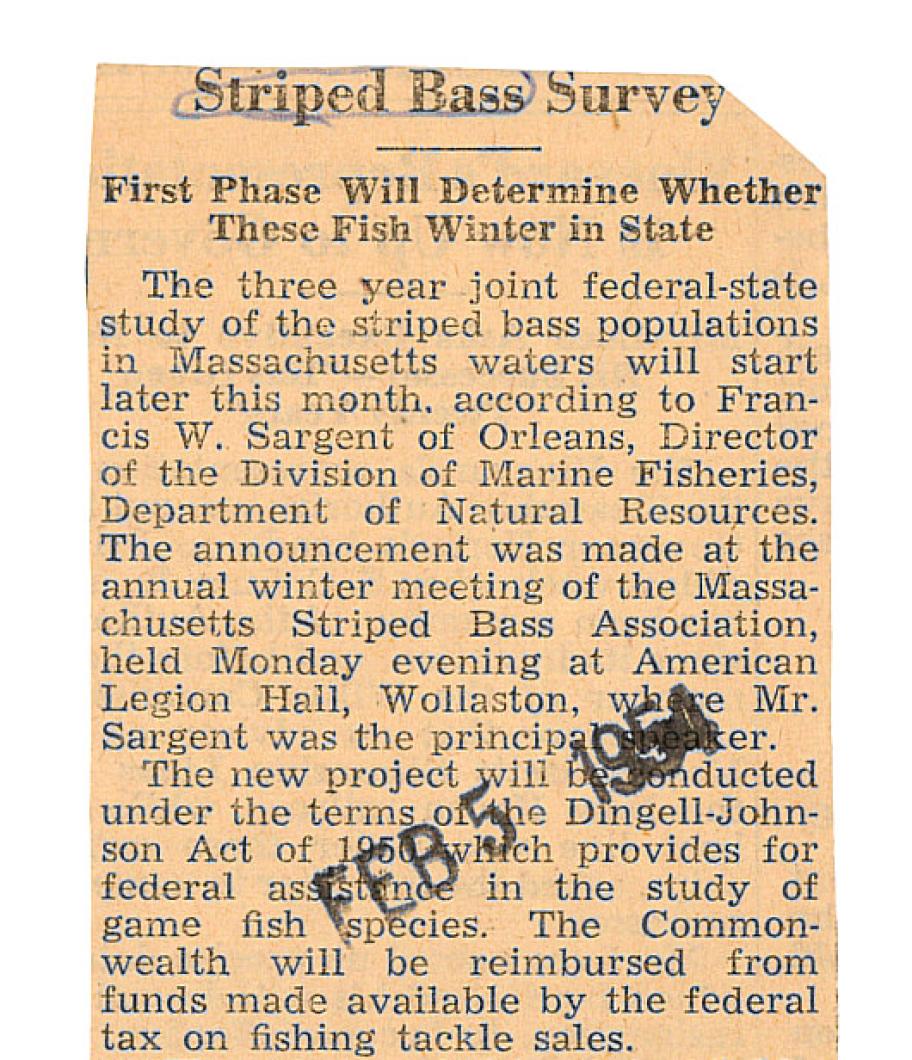




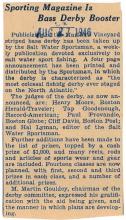
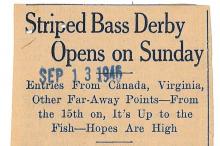
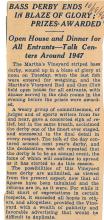
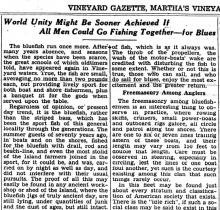
Comments